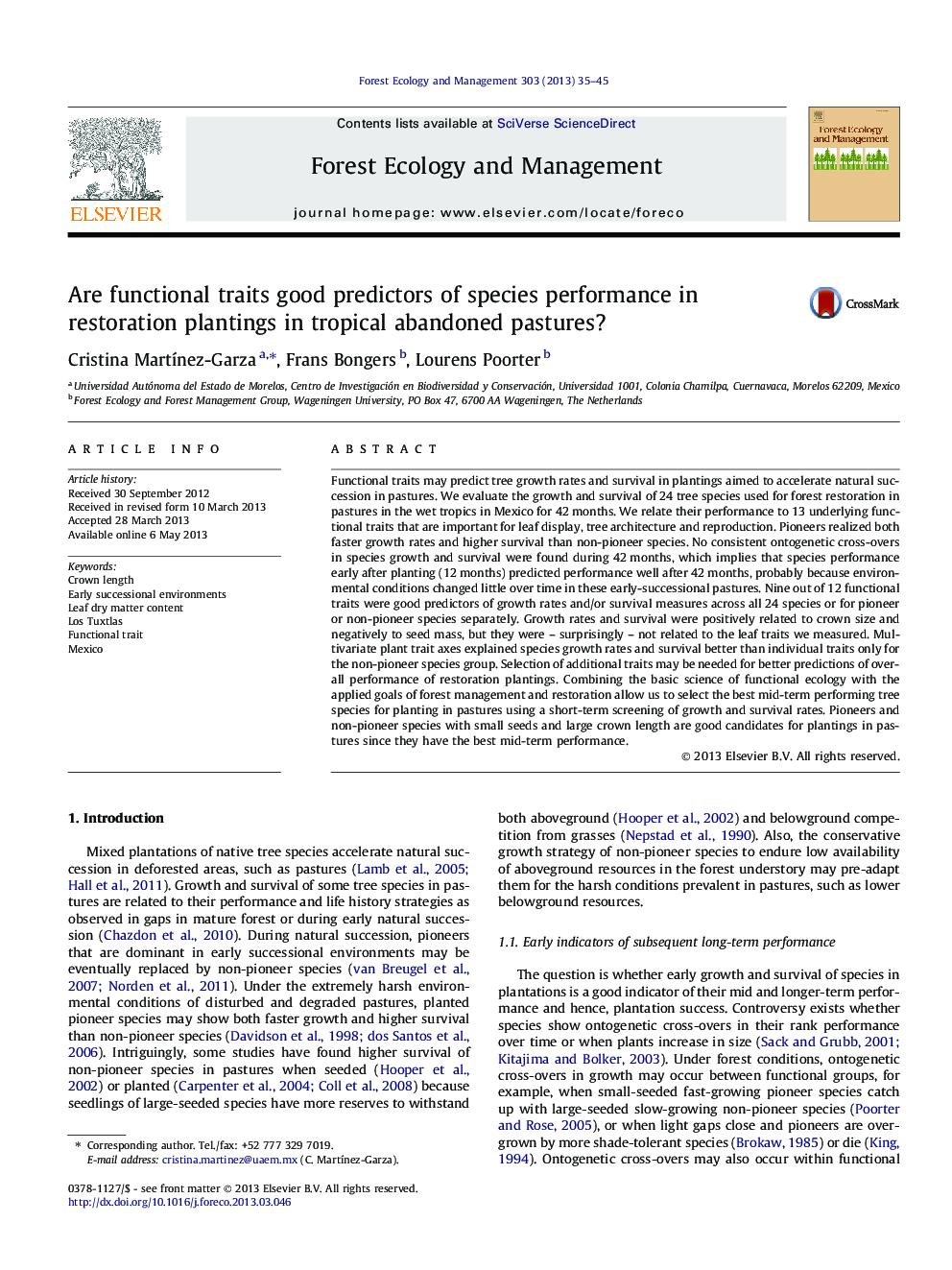| Article ID | Journal | Published Year | Pages | File Type |
|---|---|---|---|---|
| 86735 | Forest Ecology and Management | 2013 | 11 Pages |
•We evaluated the performance of 24 tree species in the wet tropics in Mexico.•We relate performance to 13 functional leaf, reproductive and architectural traits.•Screening after 1 y may suffice to select the best performing species after 3.5 y.•Species with small seeds and large crowns are good candidates for pasture plantings.
Functional traits may predict tree growth rates and survival in plantings aimed to accelerate natural succession in pastures. We evaluate the growth and survival of 24 tree species used for forest restoration in pastures in the wet tropics in Mexico for 42 months. We relate their performance to 13 underlying functional traits that are important for leaf display, tree architecture and reproduction. Pioneers realized both faster growth rates and higher survival than non-pioneer species. No consistent ontogenetic cross-overs in species growth and survival were found during 42 months, which implies that species performance early after planting (12 months) predicted performance well after 42 months, probably because environmental conditions changed little over time in these early-successional pastures. Nine out of 12 functional traits were good predictors of growth rates and/or survival measures across all 24 species or for pioneer or non-pioneer species separately. Growth rates and survival were positively related to crown size and negatively to seed mass, but they were – surprisingly – not related to the leaf traits we measured. Multivariate plant trait axes explained species growth rates and survival better than individual traits only for the non-pioneer species group. Selection of additional traits may be needed for better predictions of overall performance of restoration plantings. Combining the basic science of functional ecology with the applied goals of forest management and restoration allow us to select the best mid-term performing tree species for planting in pastures using a short-term screening of growth and survival rates. Pioneers and non-pioneer species with small seeds and large crown length are good candidates for plantings in pastures since they have the best mid-term performance.
